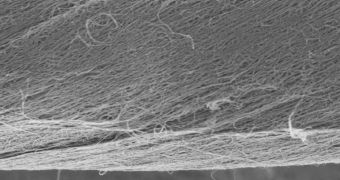University of British Columbia (UBC) researchers announce the creation of a new type of artificial muscles, which they say are just as flexible as an elephant's trunk. At the same time, the constructs are capable of rotating about 1,000 times their own weight.
The UBC team was in charge of coordinating a larger, international team of experts that worked together for this investigation. The collaboration included scientists from the University of Wollongong, in Australia, the University of Texas and Hanyang University, in South Korea.
Details of the investigation appear in the October 13 online issue of the esteemed journal Science Express. According to the team, the new study was a continuation of a previous study, conducted by research fellow Javad Foroughi's team at the University of Wollongong.
The new muscles are made up of carbon nanotubes. This material is very well known for its high flexibility and tremendous toughness and resistance. At some point, there was talk of using it to create an elevator that could take astronauts to low-Earth orbit.
Investigators say that the new CNT bundles are capable of rotating as much as 250 degrees per millimeter of muscle length, which is about 1,000 times more rotation that what can be achieved using any other material on the market today.
The CNT-based strands are therefore stronger and more flexible than artificial muscles made out of conductive organic polymers, ferroelectric materials of shape-memory alloys. Until now, these were considered to be the most efficient constructs of this kind.
“What’s amazing is that these barely visible yarns composed of fibers 10,000 times thinner than a human hair can move and rapidly rotate objects two thousand times their own weight,” explains UBC Department of Electrical and Computer Engineering associate professor John Madden.
“While not large enough to drive an arm or power a car, this new generation of artificial muscles – which are simple and inexpensive to make – could be used to make tiny valves, positioners, pumps, stirrers and flagella for use in drug discovery, precision assembly and perhaps even to propel tiny objects inside the bloodstream,” the expert adds.
The new investigation was supported by funds from the Natural Sciences and Engineering Research Council of Canada (NSERC), through a Discovery Grant.

 14 DAY TRIAL //
14 DAY TRIAL //